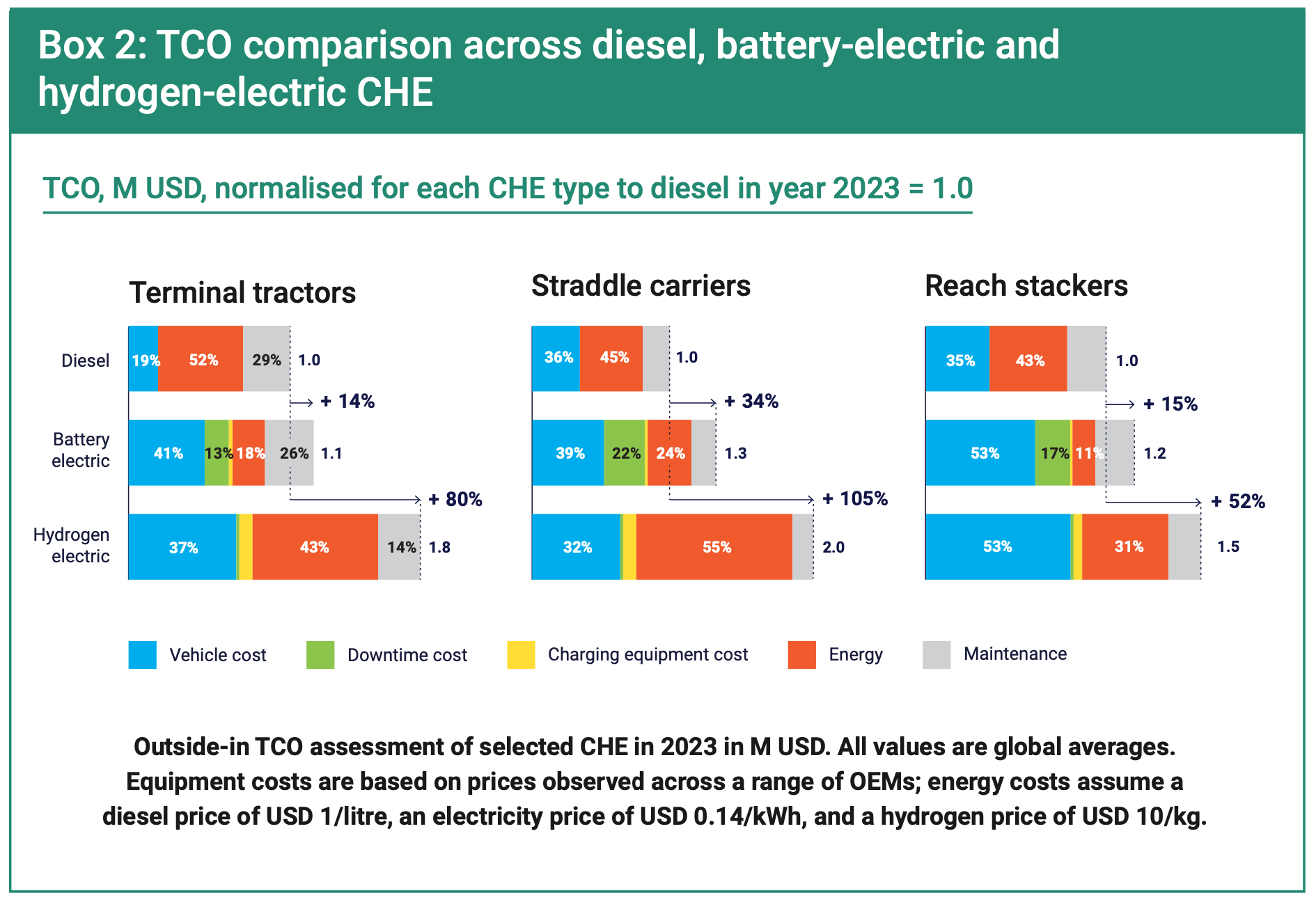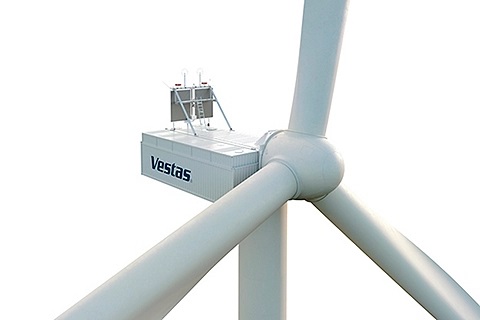Sign up for daily news updates from CleanTechnica on email. Or follow us on Google News!
In what is turning into an ongoing series of amuse bouche articles between my full course meals on things like iron projections through 2100 and supercritical CO2 hype, I’ve been having fun highlighting hydrogen-for-energy failures. This week is a tapas bar meal full of them. And there’s a bonus side dish of small modular nuclear reactors too.
My most recent entry was just this week, when I wrote about the Maersk APM Terminals study where the group was forced yet again to dig through the numbers and prove that hydrogen vehicles would be a lot more expensive to buy and a lot more expensive to operate than battery electric vehicles. That study wasn’t just a study by someone like me, that study was done by the organization which owns and operates about 8% of the major commercial cargo terminals in the world, under the auspices of their director of global decarbonization, Sahar Rashidbeigi, who I’ll have the pleasure of chatting with again next week.

Chart of total cost of ownership comparisons between current diesel and alternatives of battery electric and hydrogen for port ground vehicles.
With 8% of the ports, that means that they own and operate something like 8,000–10,000 container handling vehicles, cranes, and gantries. The untethered ones burn diesel, and APM’s cut of that is in the million tons of greenhouse gases a year, just for moving containers.
They are big enough to move the dial on port decarbonization by themselves, and they are big and influential enough to move all ports.
Great news, and especially great because they didn’t fall into a common trap and take a lot of governmental money to run a hydrogen trial which failed.
Unlike the commune of Pau in France. For North Americans, commune is just the French version of township, so don’t get all squicky about what they are getting up to. They aren’t all communists, hippies, Breatharians, or free love practitioners — although, in any group of 70,000 there are likely some of the above, perhaps a bit more so in France, but perhaps not. It’s just a town with about 70,000 residents.
In 2019, they said to themselves:
“Hey, let’s not bother to look at trials and studies on hydrogen fuel cell buses around the world that failed miserably every time! What would be the fun in that! Instead, let’s listen to these nice people claiming hydrogen is the answer to all of our problems, buy a bunch of first-of-a-kind hydrogen buses, and hope the national government gives us enough money to fuel them!”
They liked, apparently, to claim that they were pioneering hydrogen buses, which is nonsense. Hydrogen fuel cell bus trials have been undertaken since the 2000s and have always failed. Even ones in Whistler, BC, where Ballard executives like to ski and dine since it’s just up the highway from their Vancouver-area campus, couldn’t be made to work and were abandoned.
What happened with the commune full of hydrogen buses? Well, they were a complete pain to keep running, they were incredibly expensive to run, and national hydrogen subsidies were drying up. They’d managed to get two-thirds of the very high capital cost of €15 million covered by the EU and France, but the 80% green hydrogen was very expensive and the nation’s and region’s purse strings were being drawn closed.
Why were they a pain to keep running? Well, hydrogen fuel cell vehicles are vastly more complex than either diesel or battery electric ones. They have all the same stuff as battery electric vehicles, including batteries. They also have ultra-high-tech, ultra-high-pressure hydrogen tanks. They have lots of thermal management equipment, as hydrogen gets very cold when compressed and very hot when decompressed — the opposite of normal gases because hydrogen — and compression levels are very high, so temperature variances are very high. One can weld components together cold and melt things hot. They also have fuel cells, which are kind of like one-way batteries that turn hydrogen into water and electricity. They have a lot of mechanical, electrical, and electronic components which monitor and control all that complexity.
Basically, every hydrogen fuel cell vehicle is a Rube Goldberg machine, and they have a lot of failure modes. Seems as if Pau’s transit people found all of them over four years.
And so, the commune pulled the plug. Err … plugged in electric buses. They’ve abandoned the trial that they never should have started. They abandoned the trial that simply raising their parochial rural heads a bit and gazing beyond their commune’s borders at other trials would have stopped dead in its tracks.
They could have looked as far as China, which after all is only a few Google clicks away for this kind of thing, and seen that there are perhaps 600,000 electric buses on the roads of the country and no fuel cell buses.
This is very similar to what the nearby German state of Lower Saxony did compared to its sibling state of Baden-Württemberg. Lower Saxony decided it really needed to see for itself if hydrogen trains were a stupid idea and bought a bunch, then abandoned them when the obvious reality sunk in. Baden-Württemberg simply put together a simple spreadsheet, validated the assumptions, and said, “Nein danke, wassersstof, you are three times as expensive as batteries and overhead wires.”
Which one of those German states wasted a lot of time and money, as Pau did? Which one did the slightest of analysis up front and asked a decent spreadsheet jockey to run up a little cost comparison?
Recently, Boston Consulting Group and Oxford Global Projects produced a bit of a paper on how to do power-to-x projects better. The most interesting parts for me were the charts that made it clear that virtually no hydrogen projects were getting to final investment decision, never mind into operation. About 12% of the proposed plants made it into operation, but they were the tiniest ones, represented 0.2% of the proposed volumes.
The paper’s prescriptions kind of missed the point, as the framing was wrong. The authors assumed that hydrogen for energy would be competitive, and it won’t be. That’s why only 0.2% by kilotons made it through to operation. The rest were uncompetitive with things like batteries, grid ties, biofuels, and heat pumps. Obviously. Lots of delusion in hydrogen proposal land, and that delusion feeds the confirmation biases of hydrogen for energy fans.
Enough with hydrogen-for-energy failures. Let’s pivot to nuclear energy failures, specifically the also inflated bubble of small modular reactors. As I said a couple of years ago:
“Small modular reactors won’t achieve economies of manufacturing scale, won’t be faster to construct, forego efficiency of vertical scaling, won’t be cheaper, aren’t suitable for remote or brownfield coal sites, still face very large security costs, will still be costly and slow to decommission, and still require liability insurance caps. They don’t solve any of the problems that they purport to while intentionally choosing to be less efficient than they could be. They’ve existed since the 1950s and they aren’t any better now than they were then.”
But still, in the brave US state of Utah — whose motto is “Industry” but whose top economic sectors were financial activity and trade, transportation, and utilities in 2021 — they decided they had to have some of that good old fashioned nuclear electricity. This is despite not having any nuclear power plants of any size or shape in the state and having lots of wind, solar, and hydro generation as well as a lot more resource to exploit in its wide open, sparsely populated spaces.
A bunch of communes … errr, townships … and the Department of Energy decided that building a promise of SMRs on the DOE’s Idaho National Laboratory research facility would be a great idea. Yes, at the end of this, Utah still wouldn’t have had any nuclear reactors, as they would have been in the neighboring state.
What’s that? A “promise of SMRs”? That’s the collective noun for a set of small nuclear reactors I’ve just coined. I’m sure the SMR crowd won’t find it funny, but I think it’s appropriate.
As I noted a few months ago, the Wright’s Law wishful thinking of plummeting SMR costs with manufacturing lots of them doesn’t stand up to the slightest scrutiny. In an absurdly best case scenario, they still would have been more expensive than current wind and solar in 2040 after thousands of them were built. The costs were going up and the number of Utah townships remaining committed to the effort was going down.
The US DOE had already guaranteed close to $1.4 billion and given the firm $600–900 million of it. Frankly, I was surprised NuScale hadn’t managed to blow more than a billion of government money yet.
And now NuScale and the Utah townships that were going to buy its electricity have parted ways. The electricity was going to be too expensive and the townships undoubtedly had stopped believing the transparent lies about schedule and budget. So the effort has been dissolved, and a decade of time and a lot of money that could have been spent building wind, solar, transmission, and storage is behind Utah.
This is just the beginning of the cancellations for small modular reactors globally. They don’t make fiscal sense, so they won’t be built. It’s pretty straightforward.
Utah, by the way, is also home to another complete nonsense-burger of a DOE-funded project. There’s a coal plant that feeds transmission to LA that unsurprisingly is going to be closed. There’s a town of 3,000 people there that will be without its major source of soot-stained salaries and pin money. As a result, Utah and a bunch of people who probably should know better put together a deal where they would build a natural gas pipeline and a bunch more transmission to the town, a bunch of “hydrogen ready” natural gas generation units, a bunch of wind and solar and solar farms in the surrounding region, then electrolyze water to make green hydrogen and put it in salt caverns under the town.
Then, after all of this massive infrastructure buildout focused on a town with no future, they would reuse the transmission over the mountains to LA. Yeah, that’s infrastructure reuse in the USA these days. The DOE, naturally, gave them $504 million in guaranteed loans for this small town preservation graft, a project that will end very badly.
Small modular nuclear reactor and hydrogen-for-energy proposals and trials are all zombie proposals sucking time, effort, and willpower away from the necessary decarbonization of our economy. This little roundup is just an appetizer course for the absurd feast of riches to come with canceled projects and crashing dreams. Many nest eggs were counted before they were hatched. Now they will be crushed.
Have a tip for CleanTechnica? Want to advertise? Want to suggest a guest for our CleanTech Talk podcast? Contact us here.
EV Obsession Daily!
I don’t like paywalls. You don’t like paywalls. Who likes paywalls? Here at CleanTechnica, we implemented a limited paywall for a while, but it always felt wrong — and it was always tough to decide what we should put behind there. In theory, your most exclusive and best content goes behind a paywall. But then fewer people read it!! So, we’ve decided to completely nix paywalls here at CleanTechnica. But…
Thank you!
Community Solar Benefits & Growth
CleanTechnica uses affiliate links. See our policy here.




